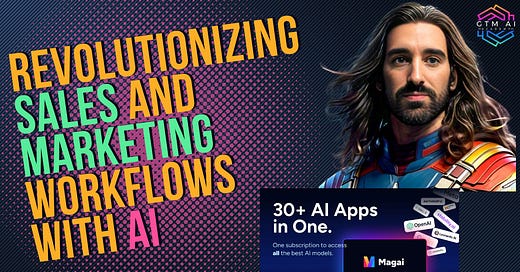01/28/25: Dustin from MagAI, Deepseek Turmoil, 5 Ways to use NotebookLM for Biz, AI Agents are your Digital identity, Sequoia AI report, MagAI
The goods for the last week of January, good, bad and ugly.
Another week of the GTM AI Podcast and newsletter.
News is coming, a few exciting changes, just thought I would tease ya a bit by letting you know changes are a coming in the first of February.
For those of you new to the newsetter, WELCOME. We have 2 tiers, the free newsletter which is below and the focus is on news and trends with deep dives into tech e…
Keep reading with a 7-day free trial
Subscribe to GTM AI Podcast & Newsletter to keep reading this post and get 7 days of free access to the full post archives.



